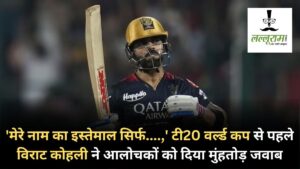Helping hand: Sports science, tour guidelines, higher prize cash play a task in Big 3’s persevering with dominance in tennis
7 min read Three hundred and 11 weeks. That’s practically six years. You can match two Olympic Games or two FIFA World Cups in that point. Even a one-way journey to Jupiter, 886 million kilometres away from Earth, might be accomplished in that point. On Monday, that’s how lengthy Novak Djokovic would have been the World No. 1 tennis participant.
He’s 33 now, 34 in May, and overtook the file (310 weeks as No. 1) held by 39-year-old Roger Federer since July 16, 2012, when the Swiss went previous the mark set by Pete Sampras. Djokovic will probably be setting a brand new mark on Monday, and Federer – who turns 40 in August – will probably be returning to the tour this week after present process a number of knee surgical procedures final 12 months.
And then there’s 34-year-old Rafael Nadal, who has 20 Grand Slam titles and is the joint record-holder with Federer for the very best variety of males’s singles majors. He’s been World No. 1 for 209 weeks – or 4 years – making it practically 16 years of the trio’s dominance.
None within the Big 3 is able to go away. And as former World No. 18 Vijay Amritraj describes this ‘greatest era’ of tennis, there’s a proficient and robust bunch of kids “pushing on the door with both arms and legs, but the Big 3 still aren’t moving.”
It’s a testomony to their need and dominance that has seen them declare 58 titles mixed over the past 70 Grand Slams.
A majority of the good champions from earlier generations left the game across the age of 30. Pete Sampras – whose 14 Grand Slam title tally as soon as appeared unassailable – retired only a month after his thirty first birthday.
If the Big 3 had retired a month after their very own thirty first birthdays, their Grand Slam tally would have been Federer 17, Nadal 16 and Djokovic 14. But modifications in sports activities science, off-court routines and the provision of higher prize cash than earlier generations have helped them keep at their peak for an extended period – not to mention proceed within the recreation.
“There are so many things happening now that can help you prolong your career, especially for the top guys,” Vijay explains. “You’re playing shorter duration matches, you’re financially more secure so you don’t have to play both singles and doubles. So, you are given an opportunity to lengthen your career for as long as you can manage.”
ATP Rules
Along with sports activities science, scheduling of occasions performs an necessary position in longevity.
“As you age, the body takes longer to recover and so it’ll be difficult for a player to hit four peaks in a year,” explains Dr Nikhil Latey, physiotherapist and sports activities scientist.
“Federer doesn’t take part in all four Slams, and since the French Open and Wimbledon are quite close to each other, he prefers one over the other. That ensures he can perform at a high level for the few Grand Slams he plays, and his body can cope with the workload.”
But Federer, who skipped three consecutive clay seasons (together with the French Open) from 2016 to 2018, wouldn’t have been in a position to decide out of occasions had the ATP not handed a regulation in 2009.
Section 1.08 of the ATP Rulebook titled ‘Reduction of ATP Tour Masters 1000 Commitment’ says that gamers who’ve appeared in both 600 tour matches, performed for 12 years or are 30 years or above, will probably be exempted from competing in any one of many 9 necessary Masters occasions.
However, if a participant fulfils all these three standards – Federer, Nadal and Djokovic do – “then the player has a complete exemption from ATP Tour Masters 1000 player commitment.”
Meanwhile, the Grand Slams are International Tennis Federation (ITF) occasions and don’t have any requirement standards.
Sports science
“The advent of a more scientific approach to recovery has led to the longevity of today’s players,” says former India Davis Cup captain Anand Amritraj.
The higher-ranked gamers on tour journey together with their very own physiotherapists and trainers, in addition to their coach, agent and household – all of whom have a task to play within the participant’s health routine and restoration.
“You have so many people travelling with them… Now when you hear the speech of a winner or runner-up of a Slam, all you hear about is ‘I want to thank my team,’” says Anand, who together with youthful brother Vijay was a Davis Cup mainstay for India all through the Seventies and Nineteen Eighties.
“I was talking about it with Vijay the other day, the only team he had was me and I had him.”
The 68-year-old explains that the pattern of utilizing sports activities science began creeping into the game in direction of the early Nineties “with Andre Agassi getting in Gil Reyes (his long-time trainer). The approach now is more programme-oriented.”
The American, who earlier than Federer was the oldest male participant to succeed in the World No. 1 spot when he was 33 in 2003, received the final two of his eight Grand Slam titles in his 30s. He might solely keep on courtroom for so long as he might due to the cortisone injections he would tackle his again in direction of the tip of his profession. He’d retire after the 2006 US Open, aged 36, 20 years after turning skilled. But by then, the pattern of sports activities science aiding gamers had gathered added momentum.
At the 2019 US Open, Djokovic had famously employed a trailer to hold his personal Hyperbaric Chamber – an oxygen pod that will assist him get better bodily after a match. The trailer could be parked contained in the Flushing Meadows complicated in New York – which had been cordoned off for the chamber.
Even the pre-match warm-up routine now’s an in depth set of workouts that lasts at the least half-hour.
“The overall science behind performance and recovery has improved quite a bit – that’s in terms of cryotherapy (ice baths), massages and relaxation, diet and nutrition,” Latey provides. “There’s a lot more knowledge about how to handle all this which allows them to recover well.”
Back within the days of the Amritraj brothers although, working was all there was to health coaching.
“Nobody did any major weight training in those days. Maybe Jimmy Connors and John McEnroe, but that was mostly just using a five- or 10-pound weight and raising it over their head or just forward and down a few times. Very minimal stuff,” Anand provides.
“In our generation, parents and coaches said you shouldn’t do too many weights because you’ll get ‘Muscle Bound’ and then you won’t be able to move on the court because there are too many muscles. Essentially, we relied on luck and good genes.”
And massages, that are available for gamers at tournaments, had been a rarity.
“The luxury was getting a massage after that, and we had that luxury only during Davis Cup. We had a guy from Calcutta who was, not really a masseur, but basically somebody to just rub the legs.”
Physical now, however shorter matches
The stakes are higher now due to the sum of money concerned, and the sport has grow to be far more taxing bodily. Slower courts make for longer rallies, needing higher bodily conditioning. There’s additionally been speak in some pockets in regards to the prospect of putting off best-of-five- set matches on the Grand Slams.
The finals of all ATP Masters occasions had been minimize all the way down to best-of-three units by 2007.
Back within the days of the Amritrajs although, most matches had been best-of-five-sets.
“When I won the national title for the first time in 1972, I played a five-set singles match in the semi-final on Saturday and another five-set doubles match with Anand the same day,” Vijay says.
“The next day, I beat Ramanathan Krishnan in the singles final in four sets and Anand and I won the doubles final in five sets. So in two days, I played 19 sets. That would be unheard of today.”
There had been additionally no tie-breakers again then. The Davis Cup – the final main competitors to introduce tie-breakers – solely did so for early units in 1989, after which prolonged it to the deciding set in 2016.
But the decrease prize cash meant that to make a dwelling, gamers needed to compete in doubles as effectively. “A singles draw of 32 would have the same players playing the 16-team doubles event,” Vijay provides.
Former World No. 1 McEnroe received 9 males’s doubles Grand Slams alongside together with his seven in singles. Connors had two doubles titles together with his eight singles ones.
“If they say tennis is much more physical now, maybe it is, but for a much shorter period of time,” Anand says. “All tour matches now are three sets. And we had long rallies too – 30-40 shots or so. You couldn’t put the ball away with the wooden racquets.”
There’s no denying the expertise of the Big 3. But even they’ve needed to depend on the development in medical sciences to assist stretch the seemingly infinite peak of their careers. And now that the trio is again on courtroom collectively, in these unsure instances, they’re the one fixed.






